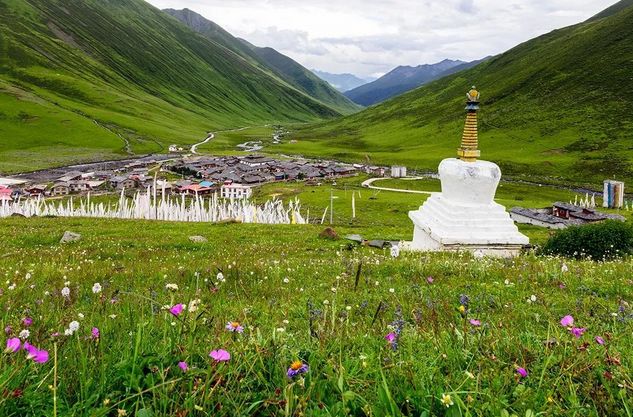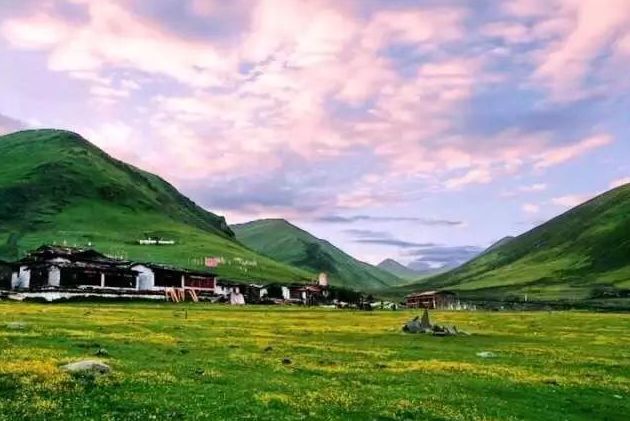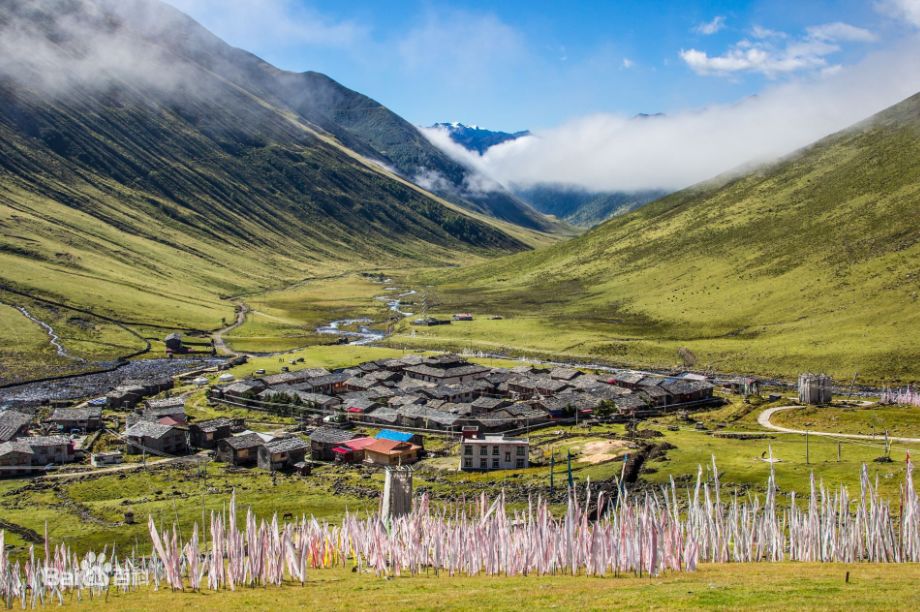“China Tourism Community” is a topic I have been thinking about for more than ten years, and it is also a travel dream of mine. Today I would like to talk about the relationship between tourism in the Greater Bay Area and the China Tourism Community.

Hong Kong-Zhuhai-Macao Bridge
Tourism is one of the leading industries in the joint development of Guangdong, Hong Kong and Macao. On December 11, 2017, the tourism authorities of Guangzhou, Shenzhen, Zhuhai, Foshan, Huizhou, Dongguan, Zhongshan, Jiangmen, Zhaoqing, Dongguan, and Hong Kong and Macao initiated the establishment of the Guangdong-Hong Kong-Macao Greater Bay Area City Tourism Federation. On April 20, 2018, the first meeting of the Tourism Federation of Cities in the Guangdong-Hong Kong-Macao Greater Bay Area was held in Guangzhou. On February 18 this year, the Central Committee of the Communist Party of China and the State Council issued the “Outline of the Development Plan for the Guangdong-Hong Kong-Macao Greater Bay Area”.
The following content was put forward by friends in the tourism industry in Guangdong. Tourism in the Greater Bay Area will be integrated from these aspects: formulate plans and compile tourism development plans in the Greater Bay Area; make good use of policies, and the 144-hour transit visa exemption will soon be implemented; joint promotion , to jointly package the overall image of the Greater Bay Area; data sharing, to jointly build a tourism big data platform in the Greater Bay Area; talent training, to strengthen the training and delivery of tourism talents;
I sum up the above-mentioned measures in one word: “integration of tourism in the Greater Bay Area” – if the above points are realized, it will be the integration of tourism in the Greater Bay Area.
The core is “free entry and exit of people”
The first step in the tourism development of the Greater Bay Area is to become a world-famous bay tourist destination. The Greater Bay Area has two characteristics, one is “one country, two systems”, which is not found in the world, and the other is the century-old blend of Chinese and Western cultures. The culture here is different from the ancient cultures of the Central Plains and Beijing, mainly because of the past hundred years The history and culture formed , whether in Guangzhou, Macau, or Hong Kong, all cultures can be summed up as “a hundred years of history, a fusion of Chinese and Western”. These are the two most competitive characteristics of the Greater Bay Area in terms of social and cultural characteristics.
In terms of tourism products, the Greater Bay Area can focus on four types of tourism products: first, urban tourism that integrates Chinese and Western cultures, because the Greater Bay Area is an urban agglomeration; second, eco-tourism, including rural tourism; Cultural tourism with the theme of wind and cloud; the fourth is cruise tourism, because the Greater Bay Area has access to the South China Sea and the Pacific Ocean.

Macau Historic District
Here is a set of figures for 2018. Guangdong, Hong Kong, and Macau received nearly 140 million inbound tourists, including 23 million foreign tourists; nearly 130 million outbound tourists from the three places, including foreign tourists Nearly 18 million , this is a huge market group, inbound tourism, outbound tourism groups. Above I used “number of passengers”, because most of the entry and exit between Guangdong, Hong Kong and Macao are “travel”, not “tourism” .
The core of tourism integration in the Greater Bay Area should be “free entry and exit of people”. Now you cannot come to the mainland with a Hong Kong visa, and you have to apply again when you come to the mainland. The qualifications of tourism enterprises in the three places cannot be mutually recognized, the tourism enterprises in the three places cannot operate across borders, practitioners in the three places cannot work across borders, and the qualifications of tour guides in the three places cannot mutually recognize each other.
Can residents of Guangdong, Hong Kong, and Macao travel without barriers and visit each other with their ID cards? Can Mainland, Hong Kong and Macau residents exchange visits with their ID cards? Can inbound tourists, like the European “Schengen”, apply for a foreign tourist visa in one place, and can travel to four places? Of course, this is a utopian ideal, which cannot be realized in the short term, and requires a long process of adaptation. But if you want to talk about integration, if there is no free entry and exit of people, there can be no integration .
There is a point of reference in this regard, which is the European Union. Funds, goods, personnel, and employment in EU countries can flow freely. “Schengen” visa, if you apply for a visa in one country, you can go to other EU countries. We all have this experience when traveling to EU countries. The European Community has a unified tourism policy, a unified tourism image, and a unified cultural theme, which is the “European Cultural Road”. EU countries jointly determine a tourism theme every year. The European Union is the integration of regional tourism among countries. If others can do this, we will be able to do the same one day.
Therefore, the integration of tourism in the Greater Bay Area should firstly allow the residents of the three places to communicate with each other and visit each other with their ID cards ; Finally, “Schengen”-style passage and landing visas for inbound foreign tourists, cross-border operations of tourism companies in the three places, and cross-border employment for practitioners.
The concept of “Chinese tourism market” should be established
Next, let’s talk about the future development vision of the Greater Bay Area.
Here I propose two concepts, one is the Chinese tourism market, and the other is the Chinese tourism community. The following introduces several sets of statistical data of the Chinese tourism market in 2018, which I obtained after sorting out the statistical data of the tourism authorities in mainland China, Hong Kong, Macao, and Taiwan.
In 2018, the number of inbound tourists from the mainland (mainland) was 140 million, of which 30.54 million were foreigners (30 million), accounting for 22.79.37 million were Hong Kong compatriots, 25.15 million were Macao compatriots, and 6.14 million were Taiwan compatriots, totaling 110 million 150 million outbound tourists from the 78 mainland (mainland), including 51.038 million to Hong Kong, 25.261 million to Macau, and 2.696 million to Taiwan. 47

65.148 million inbound tourists from Hong Kong , including 51.038 million tourists from the Mainland, 2.805 million tourists from Macau, 1.925 million tourists from Taiwan, a total of 55.768 million, accounting for 86 span>, 9.36 million foreign tourists, accounting for 91 million outbound tourists from Hong Kong , of which: 79.7979 million person-times went to the mainland, 6.1651 million person-times went to Macau, 1.692 million person-times went to Taiwan, a total of 87.655 million person-times, accounting for 96.0% of the total number of outbound tourists.
There were 35.804 million inbound tourists from Macao , including 32.65 million tourists from the “Greater China” region (25.261 million from the Mainland, 6.328 million from Hong Kong, and 1.061 million from Taiwan), accounting for 91.2 span>; 3.154 million international tourists, accounting for 88.8% of Macau outbound There were 27.7566 million tourists , of which: 26.241 million went to the “Greater China” region (24.65 million to the Mainland, 1.002 million to Hong Kong, and 589,000 to Taiwan), accounting for 94.5% of the total number of outbound tourists. Accounting for 5.5% of the total number of outbound tourists
There were 11,066,700 inbound tourists from Taiwan, including: Overseas Chinese tourists (2,695,600 from mainland China, 1,653,700 from Hong Kong and Macau), a total of 4,349,300, accounting for 38 span> , 6,845,800 foreign tourists, accounting for 62 16,644,700 outbound tourists from Taiwan, of which: 4.172 million person-times went to the mainland, 2.302 million person-times went to Hong Kong and Macau, a total of 6.474 million person-times, accounting for 39 span>, and 10.166 million person-times went to foreign countries, accounting for 611.1 million
Three conclusions can be drawn from these sets of data: first, the four places on both sides of the strait have become the first tourist destination and the first source of tourists; second, the Chinese tourism market has been formed; third, the Chinese tourism community There is already a prototype, a foundation.
Let’s take a look at the position of the Chinese tourism market in the international tourism market: In 2018, the four places on both sides of the Taiwan Strait received about 50 million foreign tourists. This year, France received 86.9 million foreign tourists, Spain 80.8 million, the United States 75.9 million, Italy 58.3 million and Mexico 39.3 million. The “Chinese tourism market” composed of four places in China receives about 50 million foreign tourists, ranking fifth in the world.
In 2018, a total of 86.1 million people traveled abroad from the four regions across the Taiwan Strait. This figure is more than the number of overseas tourists from the United States (about 73 million people), Germany (about 65 million people) and the United Kingdom (about 65 million people), ranking among the top in the world.
From the perspective of international tourism, the four places on both sides of the strait have become the world’s top international tourist destinations and source of international tourists. Here I want to emphasize my point of view. I have advocated for more than ten years . The mutual tourism between the residents of the four places on the two sides of the strait is domestic tourism, not international tourism; , but the tourism revenue and expenditure between four different customs areas and currency areas within a country . The tourism industry should establish the concepts of “China’s tourism market” and “China’s tourism economy”, and avoid using the terms “inbound tourism” and “outbound tourism” that are easily confused with international tourism. Because in the international tourism industry, inbound and outbound tourism has the same meaning as international tourism.
There is a saying that because the four places on both sides of the strait belong to four currency zones, four customs zones, and are four “economic territories”, tourists from Hong Kong, Macao and Taiwan and international tourists can be classified as “inbound and outbound tourists”. But what I want to emphasize is that the so-called “one country, two systems”, four “economic territories”, four currency areas, and four customs areas refer to “two systems”, but there is only one national sovereignty, which is “one country”, which cannot be used “Two systems” replaced “one country”. National sovereignty should be higher than economic territory, currency area and customs area.
Now, more and more foreign tourism companies, tourism groups, and tourism organizations, and their institutions in China that manage business in the mainland, Hong Kong, Macau, and Taiwan are called the Greater China region. They have regarded our four places as a “big China Tourist Area”. Therefore, the concept of “Chinese tourism” has emerged in the international tourism industry and has gained more and more recognition, but the Chinese tourism industry has not yet emphasized this concept.
The Greater Bay Area is a pilot area for Chinese tourism
The China Tourism Community has three basic characteristics: 1. Complementary resources and products; 2. Mutual flow of tourists and market sharing; 3. Mechanism differences brought about by different systems under One Country, Two Systems.
One country, two systems is the biggest highlight of the Greater Bay Area, but also the biggest difficulty; it is the biggest advantage, but also the biggest challenge. How to solve the differences between the two systems is a new topic. One area, two systems, three customs areas and currency areas are different from other domestic free trade areas and free trade ports. The Greater Bay Area should be more “special”, “free” and more open than other domestic free trade zones and free trade ports.
As far as the tourism industry is concerned, the mainland is government-led and market-driven. The current campaign to create a global tourism demonstration zone is a new example of government-led tourism. Hong Kong and Macau are the opposite, they are “market-led, government-driven”. The “Hong Kong Tourism Board Regulations” determined that “Hong Kong implements a ‘market-led, government-driven’ tourism development policy. The government has always adhered to a positive non-intervention policy in economic development, emphasizing the maintenance of free market mechanisms. Only when the market fails , does not rule out necessary and reasonable government intervention, and leaves enough space for the maximum use of the market mechanism.”

The predecessor of the Hong Kong Tourism Board was the Hong Kong Tourism Association. The Hong Kong Tourism Board is completely different from the Mainland Tourism Bureau. The 20 members are appointed by the SAR Government to represent different sectors of the travel industry, including passenger carriers, hotel operators, licensed travel agents, tour operators, retailers and restaurants operator etc. The approval and supervision of travel agencies in Hong Kong are actually in the charge of the Tourism Industry Council, which is our travel agency association.
The difference between the mainland and Hong Kong and Macau is also the difference in the composition of enterprises. Hong Kong’s tourism enterprises are dominated by private enterprises, and all types of enterprises compete on an equal footing. The state-owned enterprises in the mainland are the boss and the “eldest son”, and the private enterprises are actually the foil and the assistant. In key business areas, the priority of state-owned enterprises has emerged. For example, the outbound duty-free shopping industry in the mainland is actually monopolized by state-owned enterprises, or a state-owned enterprise. It has tasted the sweetness of monopoly operation. The original travel agency business is now gone, and it specializes in the departure duty-free shopping business, which is an industry that can steadily receive “dividends”. Private enterprises in the mainland actually have various invisible but tangible “glass doors” and “ceilings”. The Greater Bay Area should take the lead in removing these various “glass doors” and “ceilings”.

The systems of the mainland, Hong Kong, Macao and Taiwan are not only political systems, but also economic systems and mechanisms. How to learn from each other, how to graft, and how to cooperate is a new topic for the Greater Bay Area. The Greater Bay Area has gained experience in the coexistence of the two systems, cooperation and competition, and complementary development, which can be copied to the “Great China” of the mainland, Hong Kong, Macao and Taiwan. The tourism industry can take a step ahead and then spread to other fields. What is feasible and effective in the Greater Bay Area will be promoted to the whole country. This is the true meaning of creating the Greater Bay Area. The Greater Bay Area can also be referred to as a test area for one country, two systems, coexistence of two systems, cooperation and competition, and complementary development.
Therefore, I hope that the Greater Bay Area can become a pilot area for the China Tourism Community, and implement the policy of “cross-border flow of innovative elements such as talents, capital, information, and technology and regional integration.” “By 2035, the market in the Greater Bay Area will be high Horizontal interconnection is basically realized, and various resource elements flow efficiently and conveniently.” This is mentioned in the “Outline” of the Central Committee, but it is a big problem to implement these words.
Hong Kong and Macau are tiny places. Hong Kong has a land area of 1,104 square kilometers and receives 65 million inbound tourists a year. Macau has a land area of 30 square kilometers and receives 36 million inbound tourists a year. The tourist density is rare in the world. If the free travel of mainland tourists is further liberalized, how can Hong Kong and Macau bear it? This requires intelligence, and now smart technology. Tourist attractions in the mainland can use reservation tickets and electronic tickets to control the number of people entering the park. How can Hong Kong and Macau control the scale of independent tourists from the mainland? How to solve it in terms of system, procedure and technology? It is necessary to plan ahead and have a plan. As for visa-free and visa-on-arrival for foreign tourists, the issue is even more complicated.
We are going to discuss the promotion of tourism development in the Greater Bay Area, and I talked about the Chinese tourism market from the tourism cooperation between Guangdong, Hong Kong and Macau, and the Chinese tourism community. I just want to look forward to how to “lead the future with openness” from the perspective of tourism.




